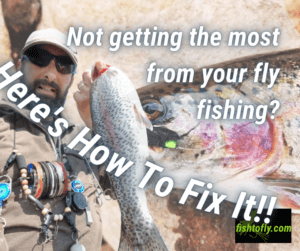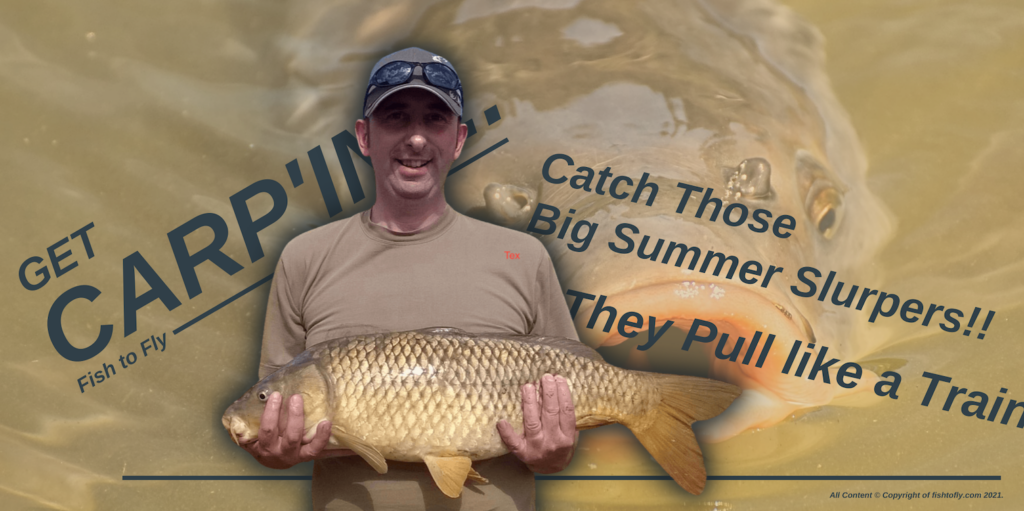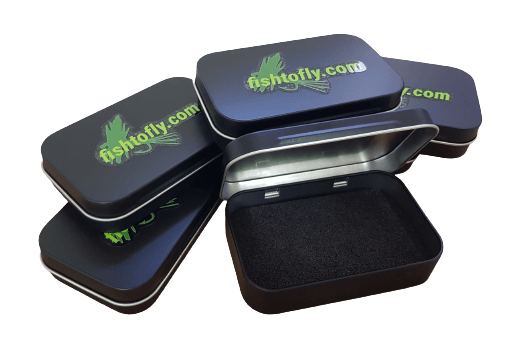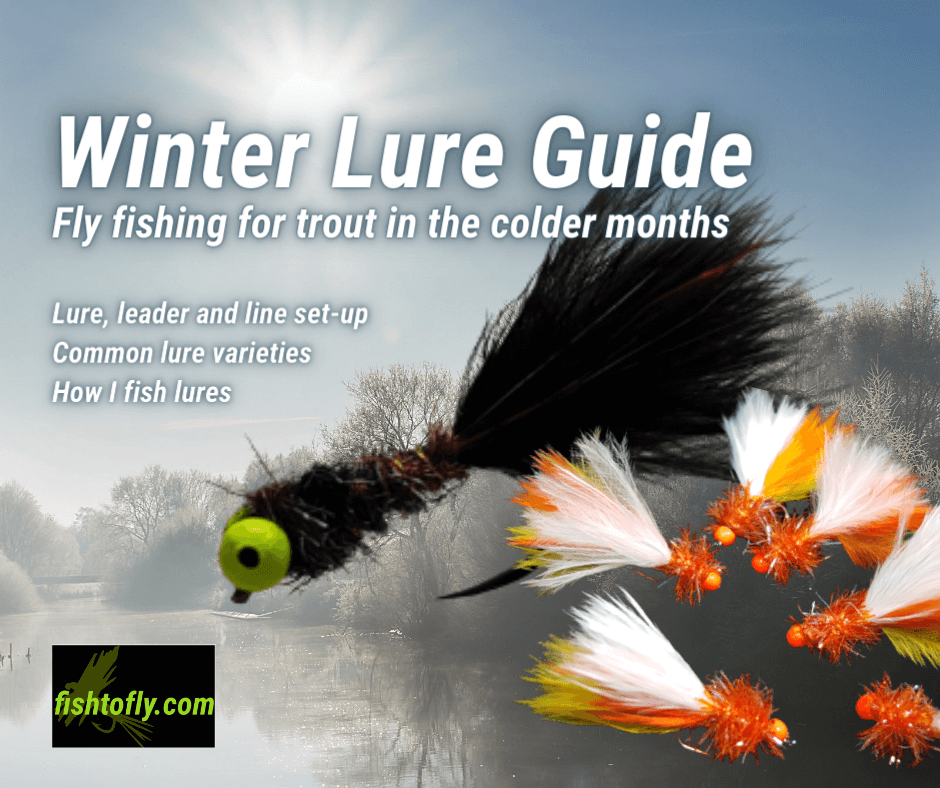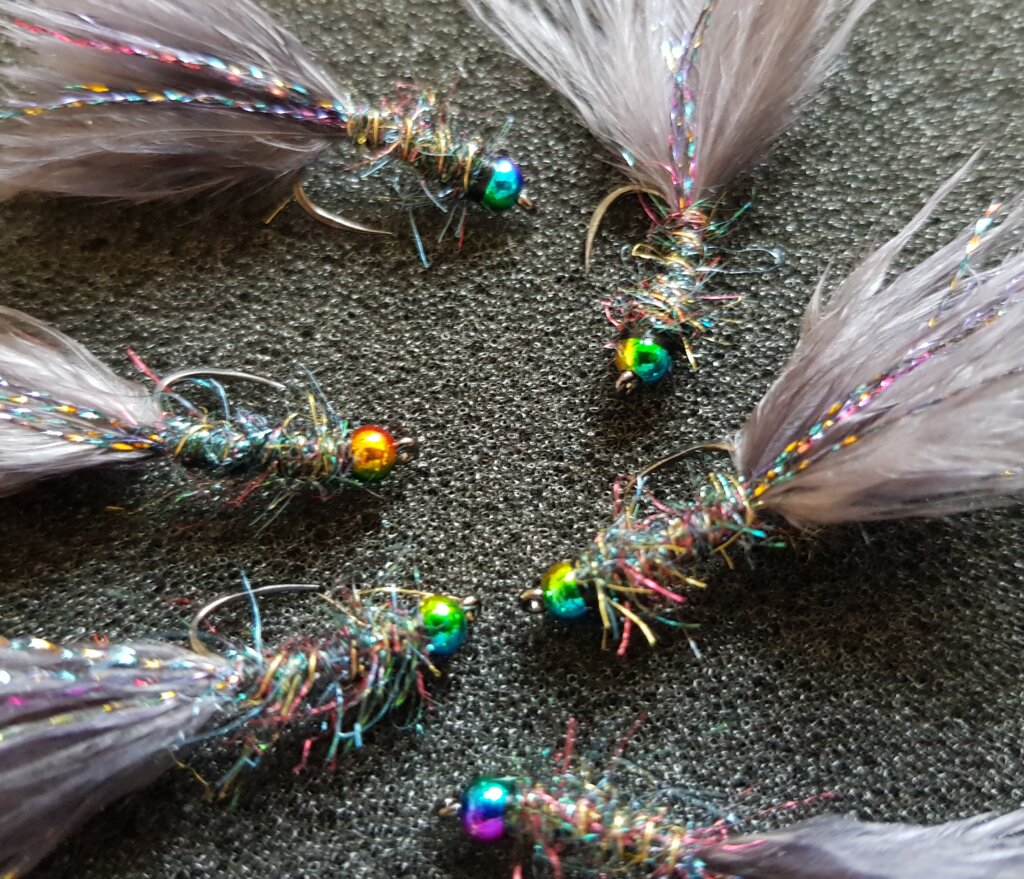When Stillwater trout fishing gets harder and the fish are being more picky… why not try something a little different and Catch Those Big Summer Slurpers They Pull like a Train!
So here’s a few key points to get you ready and prepared for some cracking sport with carp on the fly!
Background
Fly fishing for coarse fish is now well established, particularly for carp which has been popular for about 15 to 20 years now.
I know a number of hardened long standing carp fishermen that have made the switch to fly fishing after trying to catch carp on the fly!
It’s great fun and very addictive! They can be every bit as challenging as trout and warm days bring these big wily fish to the top, eager to take your fly.
1. Gear up
Like most types of fishing, the trick here is to be well prepared. If you have the slightest weakness or chink in your tackle armoury then I guarantee that a hard fighting carp will find it!
Don’t use a lightweight rod! Whilst the temptation is there, I have known anglers go with a light 4 piece rod and return with it in 5 pieces!!
If the carp at your intended water are single figure, what I like to call “fun-size” then I would recommend a 7wt. For double figure fish, I would suggest that this needs to be increased to 8wt or even 9wt.
Use a floating line and try to avoid the potential weak spots with knotted leaders, instead opt for a single tapered leader of about 10ft with a minimum tippet strength of 8lb.
If you intend to fish a snaggy water or one with a good head of double figure fish then I would increase this to 12lb.
Another tip would be to ensure you de-grease your tippet with Fuller’s earth, leader sink or something similar. This will help to reduce reflection and visibility, improving your chances of not spooking them.
Carp are powerful and even a relatively small one of say 2 or 3lb’s will give you a good run for your money! Larger fish will run hard, striping your reel, taking you to the backing!
2. Tactics
It’s a good idea to do a bit of reading up on carp before your fishing session, particularly if it’s your first time, as carp need a different approach and tactics for you to be successful.
There are plenty of articles online along with loads of youtube videos showing you just how much fun carp on the fly can be.
Here’s a few video links to whet your appetite! –
Even Bigger Carp on the Fly! | TAFishing
How To Fly Fish For Carp – Jeff Currier’s Toolkit
Whilst carp fishing is available all year round, the best months to catch them on fly gear is usually May through to September.
This is when they tend to be more active and come up in the water to feed.
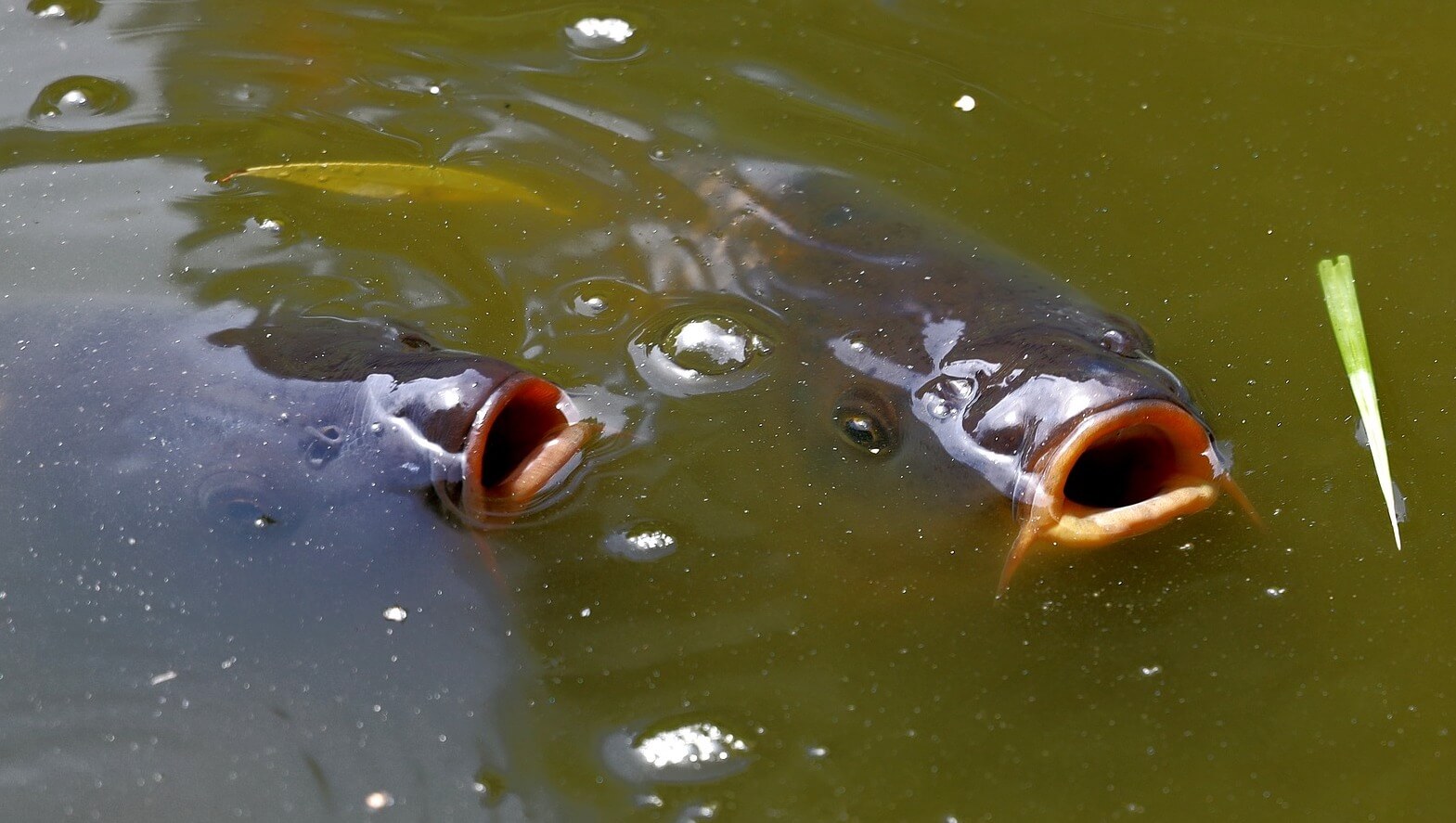
Carp love basking on the surface on hot summer days, slurping in morsels of food
Carp are cagy fish and are easily spooked, so the more delicate presentation capable when using fly fishing tackle is an advantage over more traditional carp fishing methods.
This means you are capable of stalking individual fish as well as presenting a fly to a group of top feeding carp basking in the sun.
It’s also very important to be quiet when moving about on the bank. Any sudden noises or vibrations will see your prey disappear fast, meaning a walk to another spot.
3. Dog Biscuits Can Be Fun!
For me one of the most exciting methods is to catch them off the top using the classic dog mixer biscuit technique! Whilst it may go against the grain of the die-hard fly fishing purist, it’s a hell of a lot of fun!
For this approach you will need patience, a small bag of chum mixer biscuits and a few size 10 or 12 barbless deer hair flies.
The trick here is to trim them to match the approx. shape and size of the dog biscuits you’ve bought. I do this the night before, sometimes I soak half the biscuits for a few hours so they go all spongy and swell.
Once you reach your lake or fishery, walk around for a while, see if you are able to spot any fish activity. If not, don’t worry, pick a couple of promising looking spots and throw in about 6 or so of the biscuits and wait…
Carp are very wily fish, but the temptation of a free meal will usually provoke some interest.
Once you see the mixers being sucked down, the fun begins! The idea is to get them feeling safe with the bait and competing with each other for these free morsels.
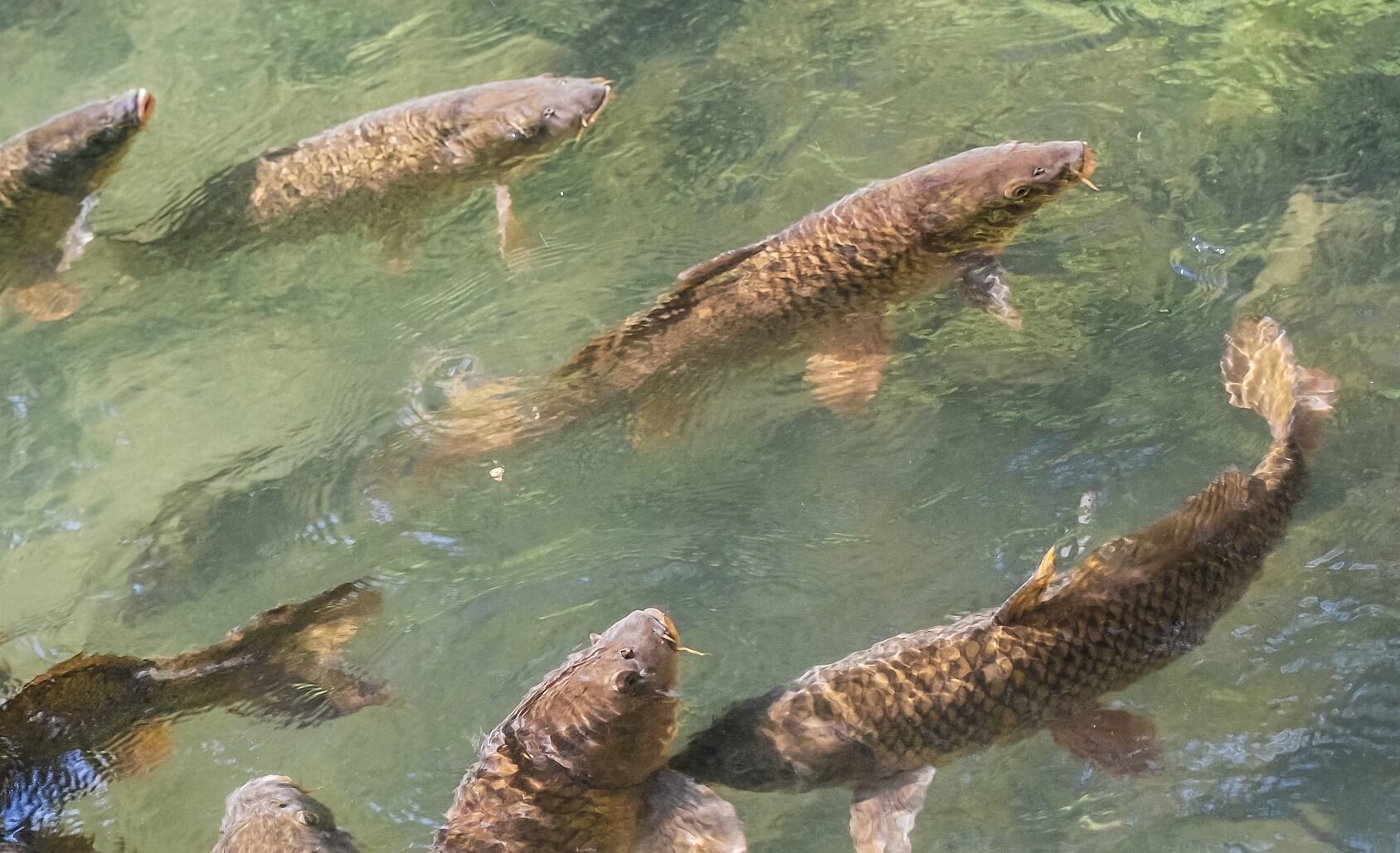
Get the carp competing for your floating mixer biscuits
Be sparing with the mixer biscuits, little and often! Just enough to keep them feeding, after 5 or 10 minutes of active feeding, allowing their confidence to grow, cast your fly past the scattering of biscuits and then slowly pull it back into the group of these floating freebies. Now wait… it’s usually not very long!
Once your fly is slurped up, wait for the fish to take it properly, then lift into it. You don’t need to strike to set the hook.
Whilst carp have big mouths they are very sensitive and have a habit of spitting out food if it doesn’t feel right.
4. Carp Flies
Depending on the type of water you’re fishing, most imitative fly patterns will catch feeding carp. I usually keep with a size 10 or 12 which tends to work best.
For me beetle and dog biscuit flies on the top are the way to go! There are many different versions of both foam beetle patterns and deer hair dog biscuit flies available.
You can get a selection of them HERE
A trick with the deer hair flies is to give them a good dunking before use as this will ensure they sit nice and low in the surface film.
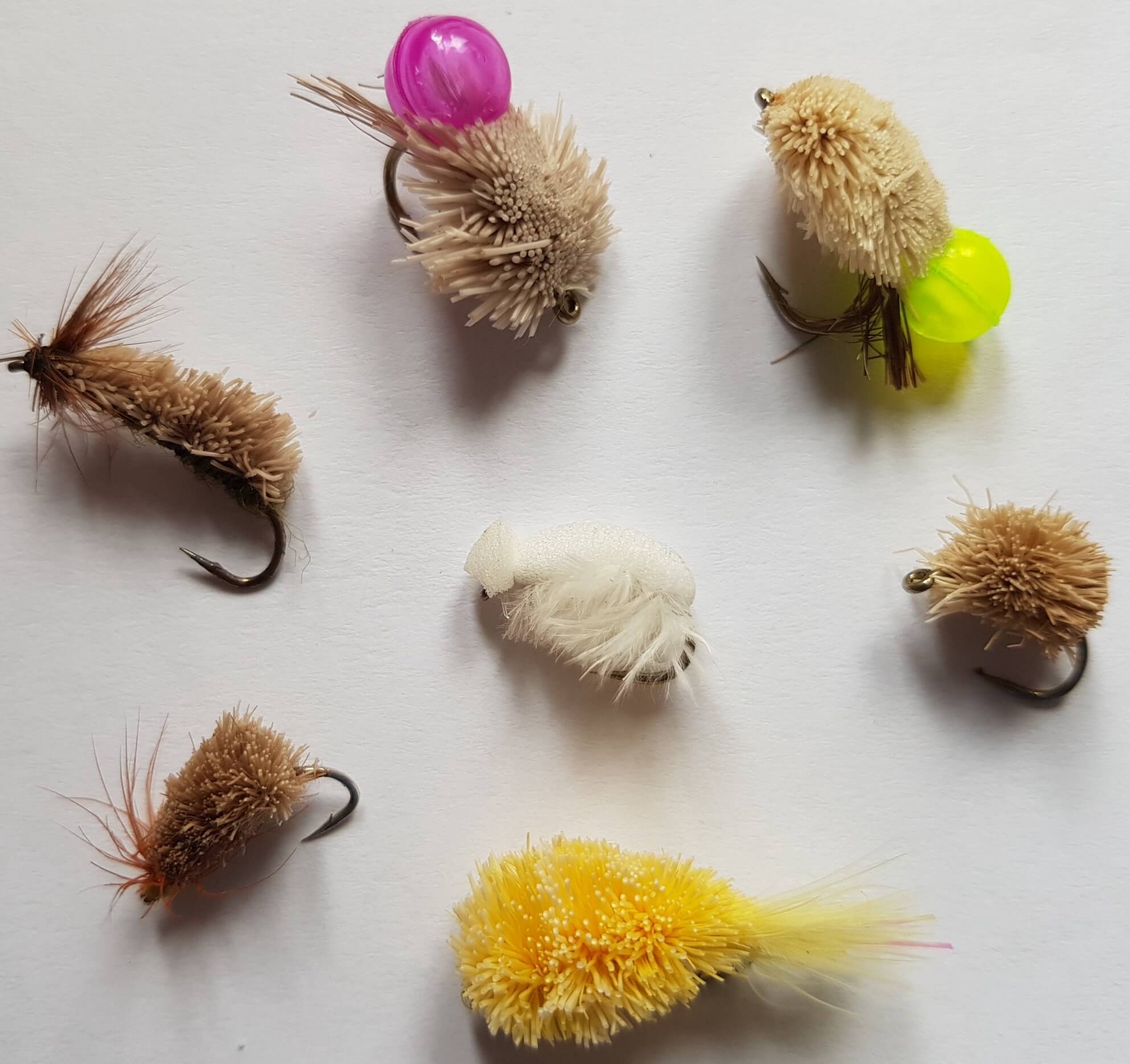
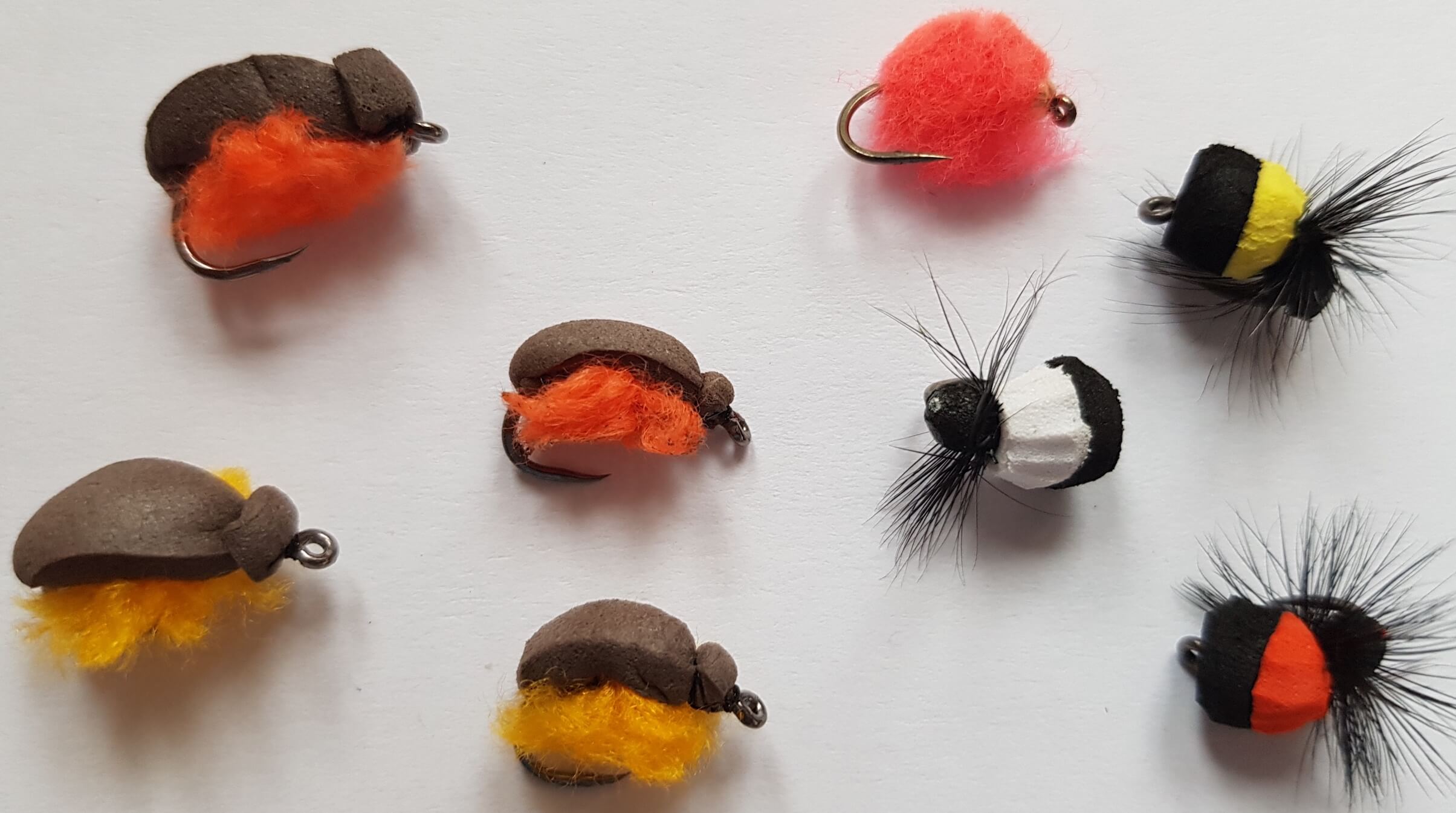
Deer hair flies Foam beetle fly patterns
5. Fishing Locations
Carp are widely dispersed and thriving in many rivers, lakes and stillwaters. In England you will need an Environment Agency (EA) rod licence to fish anywhere. Most places will also require an additional day ticket or permit.
If you are planning a trip to your nearest carp fishery I would recommend contacting them first to confirm that they allow fly fishing on their water.
You will also need to know if they have sufficient room for a back cast or at least a roll cast before you go, so it’s worth a quick call or online search.
Most fisheries will insist that you use a large landing net along with a landing mat to protect the fish from injury or damage. I would also recommend using a long pair of forceps for hook removal.
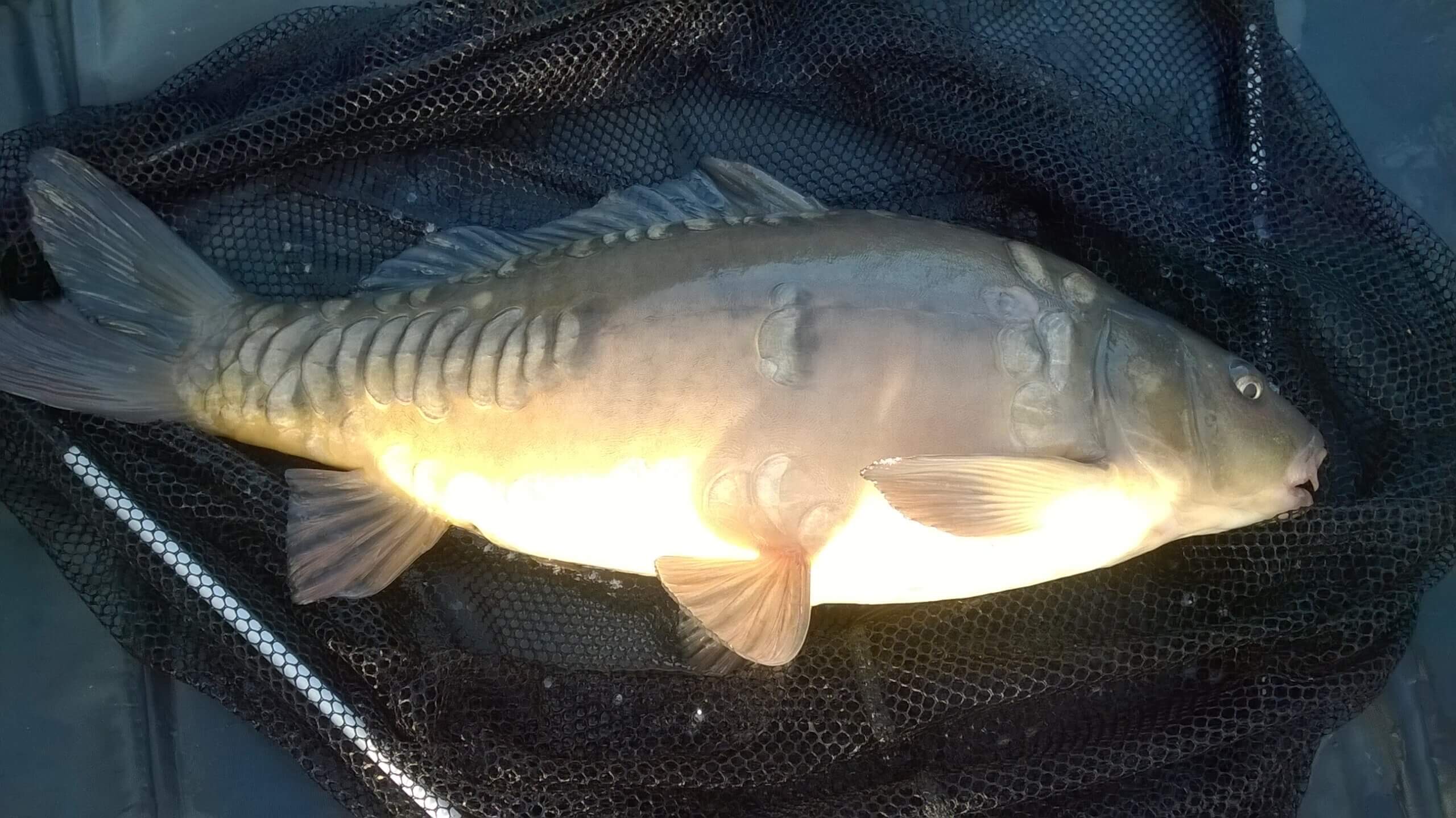
A lovely slab of Mirror Carp caught on a biscuit fly, ready to be returned to the water
Although carp are more tolerant and able to survive a minute or two out of the water, better than say trout or pike, remove the hook carefully, take a quick photo if it’s “good’un” and then get it back in the water quickly with as little handling as possible.
When releasing, place the fish back in your net, lower into the water and give the fish a minute or two to recover from its ordeal before allowing it to swim free.
Still Reading! Then check out a couple of the services I offer in the links below-
NEW TO FLY FISHING- Need some help, information or advice to get started?
CLICK HERE
TACKLE PRODUCERS & OUTFITTERS- Need your gear field testing or professionally reviewed?
CLICK HERE
Visit- Fish to Fly for more information
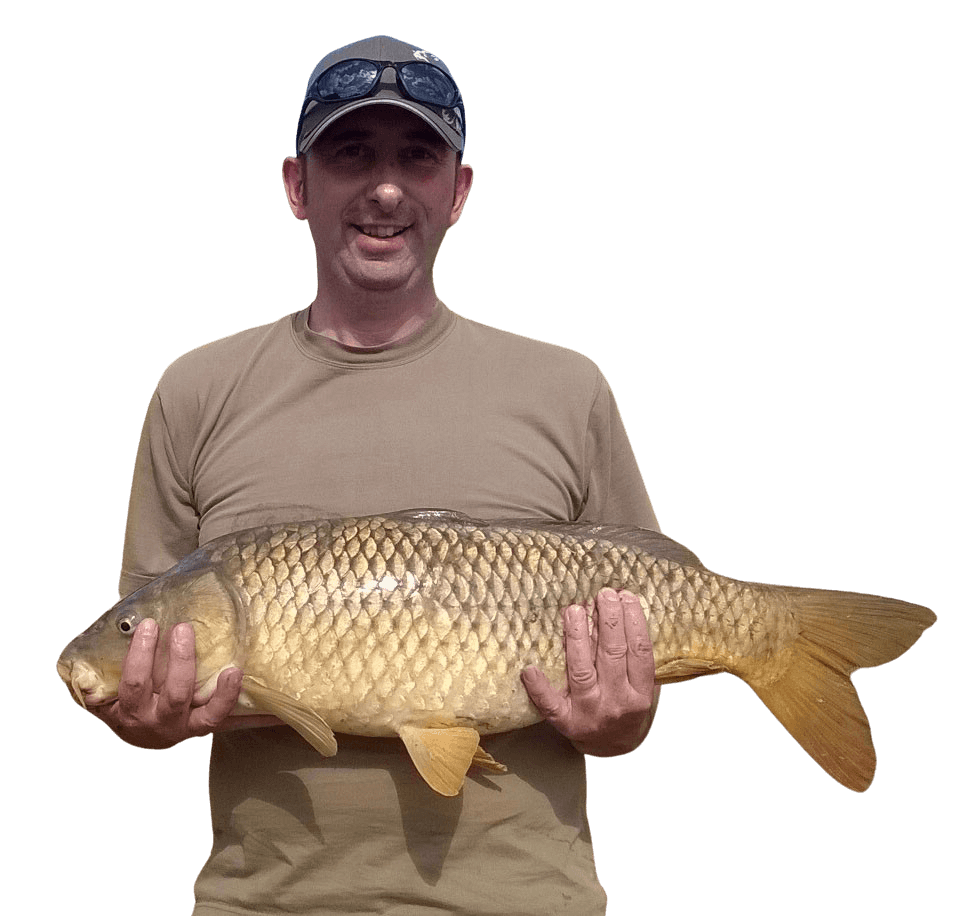
Get in touch- [email protected]

